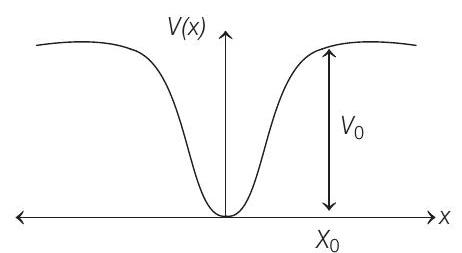Simple Harmonic Motion Ques 69
Passage Based Questions
When a particle of mass $m$ moves on the $X$-axis in a potential of the form $V(x)=k x^{2}$, it performs simple harmonic motion. The corresponding time period is proportional to $\sqrt{m / k}$, as can be seen easily using dimensional analysis. However, the motion of a particle can be periodic even when its potential energy increases on both sides of $x=0$ in a way different from $k x^{2}$ and its total energy is such that the particle does not escape to infinity. Consider a particle of mass $m$ moving on the $X$-axis. Its potential energy is $V(x)=\alpha x^{4}(\alpha>0)$ for
$|x|$ near the origin and becomes a constant equal to $V _0$ for $|x| \geq X _0$ (see figure).
(2010)

- If the total energy of the particle is $E$, it will perform periodic motion only if
(a) $E<0$
(b) $E>0$
(c) $V _0>E>0$
(d) $E>V _0$
Show Answer
Answer:
Correct Answer: 69.(c)
Solution:
Formula:
- If $E>V _0$, particle will escape. But simultaneously for oscillations, $E>0$.
Hence, the correct answer is $V _0>E>0$
or the correct option is (c).





